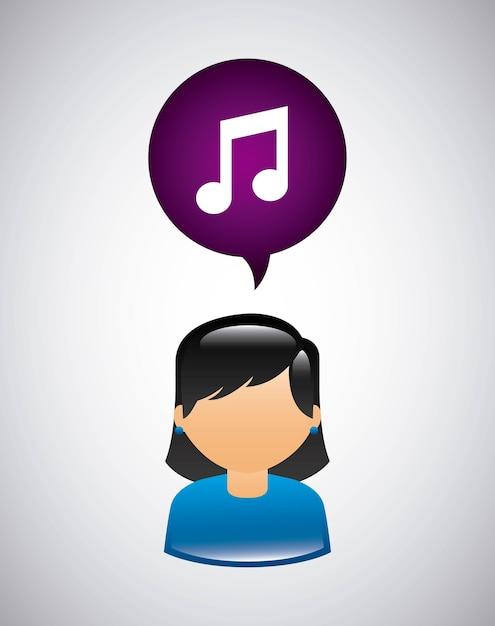Have you ever listened to a song that had a moment of complete silence within it? Perhaps you’ve heard a song about a quiet person or one with “quiet” in the title. Silence in music can be just as powerful as the sound itself. In this blog post, we will explore the concept of “songs with silence” and discuss how stillness and quietness can be celebrated through music. From “The Sound of Silence” to “The Quiet One” by The Who, join us as we explore the beauty of songs with silence.
Songs with Silence: How Nothing Became Everything
Silence is golden, as they say. But have you ever thought that silence can actually be turned into music? That’s right! Some of the most iconic songs in music history actually incorporate moments of silence to create a more dramatic effect. In this section, we’re going to dive into the world of “songs with silence” to see how these moments of nothingness can be just as powerful as the notes themselves.
The Power of the Pause
It’s a common misconception that music is all about the notes played. In reality, the “rests” between the notes are just as important. In fact, a well-timed pause can create a sense of tension and anticipation that can make a song even more memorable. One of the most famous examples of this is Queen’s “We Will Rock You.” Those two seconds of silence before the chorus hits just add to the overall energy of the song.
John Cage’s 4’33”
If we’re talking about songs with silence, we have to mention John Cage’s 4’33”. This “song” is actually just four minutes and thirty-three seconds of silence. But don’t let that fool you – there’s a lot more going on here than meets the ear. Cage’s objective was to draw attention to the sounds of the environment around the listener, hence the “silence” of the music. It’s a thought-provoking piece that challenges our preconceived notions of what music can be.
Radiohead’s “Paranoid Android”
Radiohead is no stranger to experimental music, and “Paranoid Android” is a great example of this. There’s a moment about halfway through the song where everything just cuts out, leaving the listener in silence for a few seconds. This pause serves as a sort of reset button for the song, leading up to a crescendo and bringing the listener on an emotional journey.
The Importance of Dynamics
Dynamics – the variations in volume within a piece of music – can be just as important as the notes themselves. It’s these fluctuations that give a song its emotional depth. Without them, a song can feel flat and lifeless. That’s why moments of silence can be so effective – they’re a way to break up the sound and create more contrast. Just think of Simon and Garfunkel’s “The Sound of Silence” – the silence is almost as important as the sound.
Who knew that silence could be so powerful? Hopefully, by now you have a better understanding of how “songs with silence” can be just as impactful as traditional songs. From the power of the pause to John Cage’s mind-bending composition, there’s a lot to explore here. So the next time you’re listening to your favorite song, pay attention to the moments of silence – you might be surprised at what you find.
Songs About Shutting Up
Music is all about expression. It’s about conveying a message, creating a mood, or telling a story. But sometimes, the best way to convey a message is by shutting up and letting the music do the talking. Here are some of my favorite songs about shutting up:
“Shut Up and Dance” by Walk the Moon
This upbeat song is all about letting go and enjoying the moment. It encourages the listener to forget about their troubles and just dance. With catchy lyrics like “Shut up and dance with me,” it’s the perfect song for anyone who needs to let loose and have some fun.
“Silence” by Marshmello ft. Khalid
This song is all about the power of silence. In a world that’s constantly filled with noise, sometimes the best thing we can do is just be still. The catchy chorus reminds us that “I found peace in your violence” and encourages us to embrace the quiet moments in life.
“Shut Up” by Blink-182
This classic punk song is all about pushing back against authority and refusing to conform. With lyrics like “I’m sorry it’s not like it used to be / too many fucking faces I can’t even see,” it’s the perfect anthem for anyone who’s tired of people trying to tell them what to do.
“The Sound of Silence” by Simon & Garfunkel
This iconic song is all about the power of silence and how it can be both peaceful and unsettling. The haunting melody and thought-provoking lyrics remind us that sometimes the most powerful messages are the ones left unspoken.
“Shut Up and Drive” by Rihanna
This upbeat song is all about taking control and driving towards your goals. With lyrics like “I’ve been looking for a driver who’s qualified / so if you think that you’re the one step into my ride,” it’s the perfect anthem for anyone who’s ready to take charge of their life.
In conclusion, these songs about shutting up are a reminder that sometimes the best way to convey a message is by letting the music speak for itself. Whether it’s finding peace in silence or letting go and dancing, these songs show us that there’s power in not always having to speak up. So turn up the volume, let the music take over, and enjoy the moment.
Songs About a Quiet Person
We all know someone who is quiet, reserved, and prefers to keep to themselves. They might not be the life of the party, but they have their own special qualities that make them worth knowing. If you’re looking for songs that celebrate the quieter side of life, then look no further! Here are some great songs that are perfect for the introverted, shy, and quiet individuals out there.
1. “The Sound of Silence” by Simon & Garfunkel
No list of songs about quiet people would be complete without “The Sound of Silence” by Simon & Garfunkel. This hauntingly beautiful song captures the essence of being alone with your thoughts and the power of silence. The haunting melody and Paul Simon’s mournful lyrics make this a classic that stands the test of time.
2. “Say You Love Me” by Fleetwood Mac
While “Say You Love Me” by Fleetwood Mac might not be a song that immediately comes to mind when thinking about quiet people, it does celebrate the value of someone who prefers to keep things low-key. The lyrics speak to the idea of finding comfort in the simple things in life and loving someone for who they are, flaws and all.
3. “Everybody Hurts” by R.E.M.
Quiet people often feel isolated and alone, but “Everybody Hurts” by R.E.M. reminds us that we’re all in this together. The song speaks to the idea that no matter how lonely or depressed we may feel, there is always help and hope available to us. The somber tone of the song is perfectly suited to the feelings of a quiet person who may be struggling to connect with others.
4. “Just a Little Lovin’” by Dusty Springfield
For a more upbeat and empowering take on being quiet, look no further than “Just a Little Lovin’” by Dusty Springfield. The song celebrates the idea that you don’t have to be the life of the party to be happy or fulfilled. Sometimes, all it takes is a little bit of love and understanding to make a quiet person feel seen and appreciated.
5. “Hallelujah” by Leonard Cohen
Finally, we can’t forget about “Hallelujah” by Leonard Cohen. While the song has been covered by countless artists over the years, Cohen’s original version is a masterpiece that celebrates the power of quiet introspection and reflection. The song’s haunting melody and poetic lyrics make it a classic that will always be associated with the idea of finding peace and meaning in the silence.
Whether you’re a quiet person yourself or just appreciate the quieter things in life, these songs are sure to make you feel seen, heard, and understood. So put on your headphones, sit back, and embrace the power of silence with these musical masterpieces.
The Quiet One by The Who
The Who, one of the most iconic bands of the ‘60s and ‘70s, is known for their loud and energetic music. However, they also have a lesser-known song that breaks this mold: The Quiet One.
What’s the Story Behind The Quiet One
The Quiet One was released in 1981 as part of The Who’s album Face Dances. It was written by John Entwistle, the band’s bassist, who was nicknamed “The Quiet One” for his reserved personality. The song is a departure from their usual hard-rock sound, featuring a slow tempo and laid-back vibe.
What’s the Song About
The Quiet One is a tongue-in-cheek tribute to Entwistle himself. The lyrics describe a character who is introverted and unassuming, but who ultimately steals the show with their impressive talent. It’s a playful nod to Entwistle’s reputation as the quiet, unassuming member of the band who nevertheless contributed greatly to their success.
Why You Should Listen to The Quiet One
If you’re a fan of The Who’s more popular songs, you might be surprised by The Quiet One’s mellow sound. However, it’s a testament to the band’s versatility that they were able to produce such a strong, catchy song outside of their usual rock style. Plus, the song’s humorous lyrics and catchy melody make it a fun and enjoyable listen.
In conclusion, The Quiet One is a hidden gem in The Who’s discography that deserves more attention. It’s a great example of the band’s ability to step outside of their comfort zone and produce a memorable and entertaining song. Next time you’re listening to The Who, give The Quiet One a chance – you won’t be disappointed!
The Sound of Silence Lyrics
As you listen to the song “The Sound of Silence,” you might think that the lyrics are just a bunch of poetic nonsense. However, upon closer inspection, you will realize that these lyrics are actually pretty deep.
Breaking Down the Lyrics
The first verse sets the stage for the rest of the song. It talks about darkness and how “the vision that was planted in my brain still remains.” This line is about the way that our minds can hold onto memories and ideas, even if we don’t actively think about them.
The second verse is a bit more mysterious, but it seems to be about people who are trying to communicate but can’t seem to find the right words. The line “people talking without speaking, people hearing without listening” is particularly powerful. It’s almost as if the song is saying that we’re all just going through the motions of communication without really connecting with each other.
The chorus is definitely the most famous part of the song. It repeats the phrase “hello darkness, my old friend” several times. This line is a metaphor for depression and how it can be a familiar feeling that someone might return to time and time again.
The third verse brings the song full circle by returning to the theme of darkness and silence. The final line “the words of the prophets are written on the subway walls” is particularly interesting. It suggests that even in the midst of chaos and noise, there is still meaning and wisdom to be found.
So, next time you hear “The Sound of Silence,” take a moment to appreciate the lyrics. Yes, they’re a bit abstract, but they offer a powerful commentary on the human experience.
Quietly Captivating: Songs with Quiet in Their Titles
If you think about it, songs with “quiet” in their title are quietly captivating. They’re understated, subtle, and they don’t demand your attention, but they still manage to be captivating in their own way. Let’s take a look at some of the best songs that use “quiet” in their title.
1. “Quiet” by John Mayer
John Mayer’s “Quiet” is a moody and introspective song with a simple yet catchy melody. It’s a song about the quiet moments between two people, and how those moments can sometimes speak the loudest.
2. “The Sound of Silence” by Simon & Garfunkel
Arguably one of the most iconic songs with “quiet” in its title, “The Sound of Silence” by Simon & Garfunkel is a hauntingly beautiful masterpiece. The song explores the concept of silence and how it can be both peaceful and unsettling.
3. “Silent All These Years” by Tori Amos
Tori Amos’s “Silent All These Years” is a powerful ballad that deals with themes of silence, abuse, and self-discovery. It’s a beautiful and emotional song that showcases Amos’s incredible vocal range.
4. “Quietude” by Massive Attack
“Quietude” by Massive Attack is an instrumental track that relies heavily on ambient sounds, creating a sense of calm and stillness. It’s a song that encourages you to take a deep breath and just be in the moment.
5. “Silent Lucidity” by Queensryche
“Silent Lucidity” by Queensryche is a classic power ballad that deals with the concept of lucid dreaming. It’s a song that urges you to embrace your dreams and explore the inner workings of your mind.
In conclusion, songs with “quiet” in their title may not be the most attention-grabbing, but they’re certainly worth a listen. These songs offer a different kind of beauty and intrigue – one that’s more understated and subtle than some of their louder counterparts. So, next time you’re looking for some peaceful, introspective music, give these songs a try.
How Silence is Woven into Music
How do you create a musical masterpiece with no sound at all? Welcome to the enigma of songs with silence. Some of the most iconic musical compositions have strategically woven silence into the score for unique and stunning effects. From John Cage’s 4’33” to Simon and Garfunkel’s The Sound of Silence, silence has been used to evoke powerful emotional responses from audiences.
The Importance of Rests in Music
Rests in music, also called silences, are just as crucial to the piece as the notes themselves. They serve to create an element of contrast, highlight important musical phrases, and let the listener take a breath and reflect on what they just heard. The duration and placement of silences can change the mood of a piece altogether. A few seconds of rest can create suspense, while an extended period can make a listener feel uneasy.
The Different Types of Silence in Music
Silence in music can take on many different forms. The most obvious is complete silence, such as in Cage’s 4’33”. Other types of silences include:
Punctuated Silence
This type of silence is often used to accentuate the beat of a song. The pause between the notes creates a driving rhythm that can get your toes tapping and your head bopping.
Dramatic Silence
This is the type of silence that creates tension and anticipation. The silence may come after a loud and bombastic section or just before a significant musical change. The sudden break in sound can make you hold your breath before the music picks up again.
Repetitive Silence
Repetitive silence is used to create a pattern that listeners can anticipate. A musician can punctuate the silence to change the pattern and create something fresh.
Silence in music is a powerful tool that can evoke a range of emotions in the listener. The use of rests, duration, and placement of silence can create something unique and awe-inspiring that leaves a lasting impression on the audience.
Why do Some Songs have Silence
Have you ever listened to a song where there’s a seemingly awkward moment of silence? You start wondering whether the song paused for a moment or if you accidentally hit the pause button. Then the music starts again.
The Purpose of Silence in Music
Silence is an essential part of music, and it can make just as big an impact as the notes themselves. A brief silence can create tension, catch the listener’s attention, and provide a moment of reflection. It also adds dynamics to a song, helping it feel more organized and allowing the different components of a song to stand out.
Reasons Artists use Silence
Artists use silence for various reasons. They could be using it to break the monotony of continuous sounds, add suspense before a change into a new section of the song, or create contrast between different parts of the song. The silence can also be symbolic in lyrics and can be used to add drama, emphasize the words, or create emphasis.
The Effect of Silence on Emotions
Silence is an incredibly powerful tool in music that can trigger intense emotions. For example, silence can create suspense, anticipation, refocusing, or even anxiety in some cases. Listeners experience a range of emotions in response to silence, and this is why many songs use silence creatively.
In conclusion, lots of songs have moments of silence for good reasons that add to the overall effect of the music. Next time you’re listening to your favorite songs and there’s a break in the music, remember that silence can be just as important as the notes themselves!
What’s with the Song that is Silence
Have you ever heard of a song with no lyrics and no music? Yes, that’s right, a song with silence! It may sound like a prank, but it’s actually legit. In 1952, John Cage, an experimental composer, created a musical composition that challenged the conventional ideas of music. The composition’s name is “4’33”, which is a reference to the length of the piece. Cage uses the silence of the performer and the environment to create the composition.
The Context behind 4’33”
Cage created this composition to question, “What is music?” and “What is silence?” Cage intended to show that even when there is silence, there is still sound. The sound can come from breathing, fidgeting, or any other noise that may take place in the environment. He wanted to show that music is not just in the notes but in everything around us.
The Reception to 4’33”
The reception to this composition was mixed. Some considered it to be a work of genius, while others thought it was pure nonsense. Critics and performers alike had trouble understanding the value and meaning behind this piece. However, over time, more people began to appreciate and understand Cage’s artistic vision.
The Legacy of 4’33”
Despite its unconventional composition, “4’33” has left a remarkable legacy in the music industry. It has inspired many other artists to experiment with unconventional styles and question the traditional rules of music. It has also shown that music is not just about the performance, but also about the environment and the audience’s perception.
In conclusion, the song with silence may sound absurd, but it’s a powerful and innovative concept that challenged the traditional idea of music. John Cage’s composition “4’33” will forever be remembered as a groundbreaking creation that pushed the boundaries of music.



